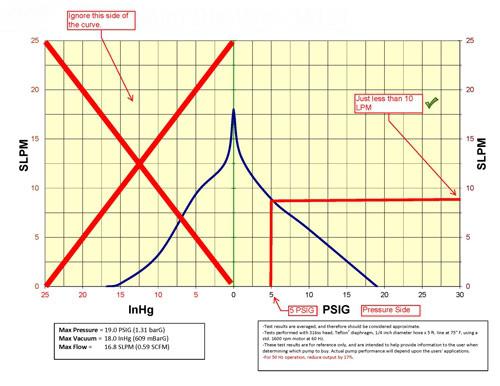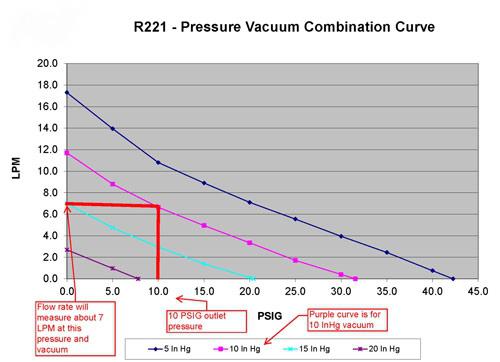
Methods for Diaphragm Pump Selection
Part 1: Pressure, Vacuum, and Flow
Pressure and Flow
For most sampling applications, the following information is sufficient in determining the type of pump to select:
♦ Required Vacuum
♦ Required Pressure
♦ Sample point conditions
♦ Required Flow Rate
♦ Temperature and Type of Gas being pumped
♦ Ambient temperature where pump will operate
♦ Distance and diameter of tubing
♦ Voltage, frequency, and classification of motor
Vacuum
If the required vacuum is not known, you will need to calculate the pressure drop from the sample point to the pump inlet. TOPSFLO can perform this calculation. What we need to know is the required flow rate, line distance and diameter, Gas composition and temperature and initial pressure at the sample point.
Pressure
If the sample gas is venting to atmosphere downstream, then only the vacuum needs to be calculated. If the gas is returning to a flare or back to process, then the pump will probably require pressure to get there. Again, TOPSFLO can calculate this – however we will need to know the pressure at the return point.
Reading the Curves
♦ The pump curves we provide are really (2) curves plotted onto (1) graph.
♦ The left side of the zero is inlet vacuum vs. flow rate with the assumption that the outlet discharges to atmospheric pressure (or close to it).
♦ The right side of the zero is outlet pressure versus flow rate with the assumption that the inlet pulls from atmospheric pressure (or close to it).
♦ In applications where the pump is pulling a vacuum and providing discharge pressure; we have another set of curves called “combination curves”.
♦ Please contact TOPSFLO in these cases.
Vacuum Example
♦ If the inlet pressure drop is calculated as 5 InHg at 8 SLPM and the sample vents to atmosphere, then all we need to do is find a pump that will provide ≥ 8 LPM at this vacuum. See below.

Pressure Example
♦ If the pump is located close to the sample point and the downstream pressure required is 5 PSIG @ 6 LPM, then all we need to do is find a pump that will provide ≥ 6 LPM at this pressure. See below.

Pressure and Vacuum Applications
Say an application requires a pump to pull through 200′ of 3/8″ sample line, flow to an analyzer, and then return to a process line 350′ away. In this case, the pump will be required to pull a vacuum on the inlet, provide flow to an analyzer, and provide positive pressure to the process line.
♦ For this we must use what we call “combination curves”.
♦ These curves show a pump’s flow rate at a given vacuum and outlet pressure.
Combination Curve Example
♦ In this case, we need to pull 10 InHg @ 7 LPM to draw the sample, but also provide a discharge pressure of 10 PSIG in order to push the sample back to the process line. See below.

Pressure Boosting Applications
In some cases, the process line may be under positive pressure when it reaches the pump inlet. If the gas sample must then be pushed back to a process line, a pump can be used to “boost” the pressure. When the pump inlet pressure exceeds 0 PSIG, the pump performance capabilities (in terms of discharge pressure and flow rate) can increase significantly. It is very important that under these circumstances specific calculations are done by TOPSFLO to avoid oversizing the pump; which can lead to premature diaphragm, bearing, and motor wear. The information we require in these applications (in addition to gas type and temperature) are pump inlet Pressure (PI) , Pump outlet Pressure (PO), and flow rate.

home

Phone

inquiry